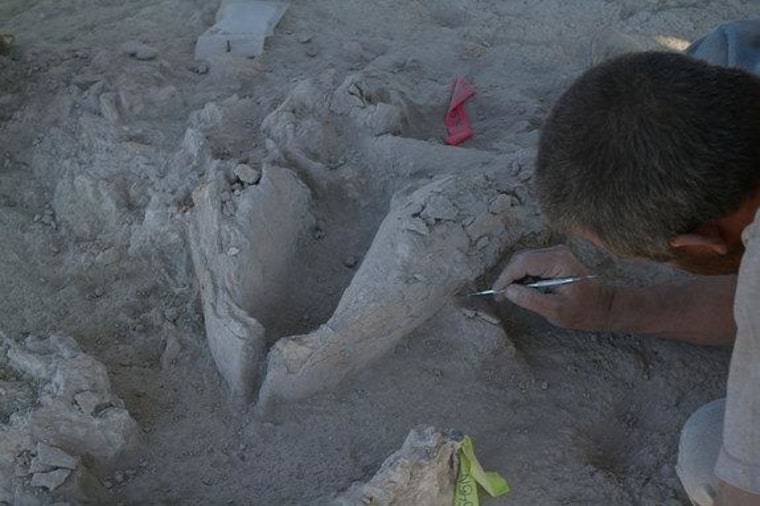There's a new mega-mammal on the menu of America's first hunters.
On a ranch in northwestern Sonora, Mexico, archaeologists have discovered 13,400-year-old weapons mingled with bones from an extinct elephant relative called the gomphothere. The animal was smaller than mastodons and mammoths, but most had four sharp tusks for defense.
The new evidence puts the gomphothere in North America at the same time as a prehistoric group of paleo-Indians known as the Clovis culture, whose beautifully crafted projectile points helped bring down giant Ice Age mammals, including mammoths. This is the first time gomphothere fossils have been discovered with Clovis artifacts.
Sign up for top Science news delivered direct to your inbox
"The Clovis stereotypically went out and hunted mammoth, and now there's another elephant on the menu," said Vance Holliday, a co-author on the new study, published Monday (July 14) in the Proceedings of the National Academy of Sciences.

The archeological site, named "El Fin del Mundo" (the End of the Earth), marks two new extremes for both the Clovis and the gomphotheres. It is one of the oldest Clovis sites ever found, and the bones are the youngest gomphotheres ever discovered in North America. Until now, researchers thought gomphotheres vanished before humans reached North America. [ In Photos: New Clovis site in Sonora ]
"The implications are pretty simple, although certainly not trivial — early human explorers of interior North America opportunistically targeted the largest Pleistocene animals as part of their cultural pattern, and this pattern probably started almost as soon as people had made their way south into the lower 48 states," said Gary Haynes, an archaeologist at the University of Nevada, Reno, who was not involved in the study. The Pleistocene epoch spans from about 2.6 million to 11,700 years ago.
— Becky Oskin, Live Science
This is a condensed version of a report from Live Science. Read the full report. Email Becky Oskin or follow her @beckyoskin. Follow us @livescience, Facebook &Google+.
More from Live Science: